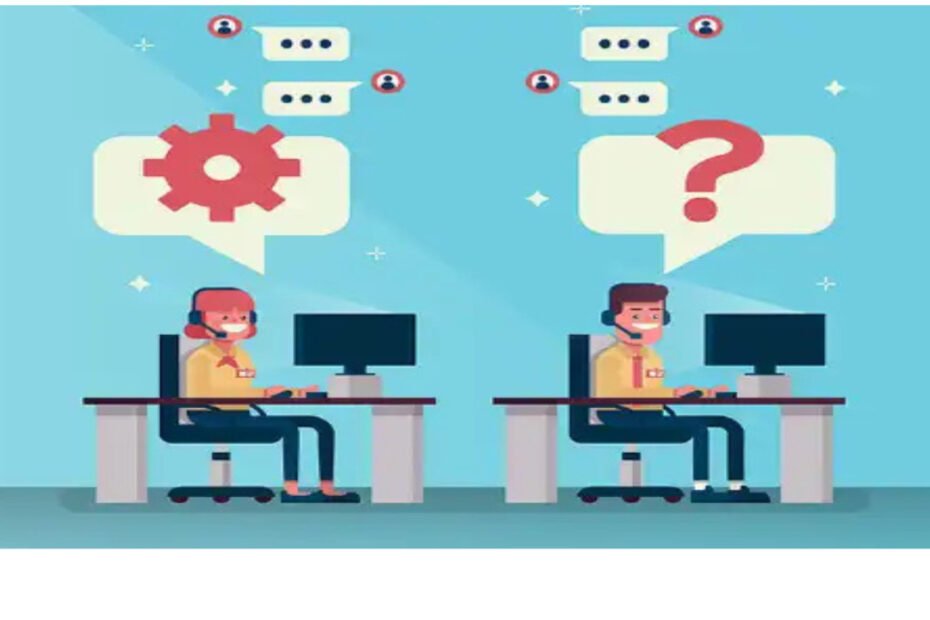When choosing a customer service tool, many companies are unsure whether to opt for a helpdesk or online chat. This is a strategic decision, as it influences both how the brand communicates with its customers and the experience they will have in each interaction.
Helpdesks are known for their ability to organize calls and centralize information, and are commonly used in areas such as technical support and customer service. Meanwhile, online chat is an agile tool that allows you to create immediate connections with website visitors, more focused on sales and conversion.
In this article, we will explain the main differences between these two solutions, the benefits each one offers, and in which situations each tool may be the most advantageous choice for your business.
What is a helpdesk?
Objectively speaking, a helpdesk is a department or tool responsible for managing customer requests, recording and organizing calls to ensure they are resolved efficiently.
Among the main features of this type of solution are:
- Ticket system: Each request is recorded and tracked, ensuring that no call is lost.
- Service history: Detailed record of customer interactions so that the team knows the customer’s history and can provide more accurate responses.
- Centralization of demands: Unifies requests from different channels, such as email, phone, and even online chats, which facilitates service management.
The helpdesk is recommended for companies and departments that handle a large volume of requests, such as customer service, technical support for internet providers, B2B e-commerce, SaaS companies, among others.
What is online chat?
As its name suggests, online chat is a real-time communication tool that allows companies to interact with website visitors in order to offer support, answer questions, or even make a sale.
Among the main features of online chat are:
- Real-time customer service: Allows you to provide instant responses to visitors, preventing them from leaving the site while waiting for help.
- Proactive invitations and pop-ups: Encourages engagement by inviting visitors to start a conversation at the right time.
- Integration with systems and CRM: Consolidates customer information so you can personalize your service.
- Chatbot and 24/7 service: Ensures that frequently asked questions are answered at any time, without losing leads.
- Adapted for mobile devices: Finally, it allows your team to serve visitors who are using smartphones and tablets to access the site, providing a seamless experience.
Online chat is best suited for e-commerce businesses, service providers, and companies looking to increase their conversion rates and connect with customers.
With tools like JivoChat, your team can analyze your audience in real time, track service metrics, integrate multiple communication channels, and offer a more personalized experience for each visitor.
Helpdesk vs. Online Chat: Key Differences
Now that we have presented the main features and capabilities of each solution, we will present a table that highlights the differences between them and helps you better understand which tool is best suited for your company.
| Feature | Helpdesk | Online Chat |
|---|---|---|
| Main focus | Technical support and troubleshooting | Real-time customer service, sales, and conversion |
| Speed | Medium to slow, depending on ticket flow | Immediate, responses in seconds |
| Objective | Organize requests and ensure SLAs | Engage visitors and increase conversions |
| Type of customer | Customers with complex or technical issues | Website visitors and potential customers |
| Main channels | Email, phone, ticket systems | Website chat, social media, messaging apps |
| Strategic resources | Service history, tickets, detailed reports | Proactive invitations, chatbot, CRM integration, mobile-friendly |
| Recommended for | Companies with high support volume or large teams | E-commerce, service providers, and businesses that want quick conversion |
Practical examples of use
Imagine a technology company that offers complex software to large global corporations. In this scenario, a helpdesk is the best choice, as the team can organize, track, and prioritize calls according to severity.
Without this type of structured system, it becomes virtually impossible to take care of all the details that each call requires without compromising the quality of service.
Now think of an e-commerce site, where visitors seek information about delivery times, product availability, and payment terms. In this case, online chat is the most suitable option.
This is because it allows the customer service team to provide instant and personalized responses, considerably reducing the chances of cart abandonment and increasing conversion and loyalty rates.
Insights and metrics
According to our analysis, 78% of consumers prefer to contact companies via text message, which reinforces the importance of providing online chat on your website.
On the other hand, companies that adopt a helpdesk system can reduce the average call resolution time by up to 30%, ensuring greater efficiency and high levels of customer satisfaction. In addition, detailed ticket tracking allows you to identify critical issues that need adjustments and improvements.
Recommendations
Before choosing a solution for your business, it is essential to assess the volume and complexity of requests. In scenarios that require organization and prioritization of calls, the helpdesk is the most appropriate option. Online chat, on the other hand, is more efficient for companies seeking engagement and quick interactions with customers.
Currently, it is also possible to integrate a helpdesk system with online chat and have an even more complete solution. Tools such as JivoChat allow you to centralize metrics, service history, and multiple communication channels, combining the best of both worlds in a practical and efficient way.
Helpdesk or Online Chat: Which one should you choose for your business?
Ultimately, the decision depends on your company’s needs and priorities. In many cases, the answer is not to choose one or the other, but rather to combine the two to create a smarter, more integrated, and results-oriented service ecosystem.

